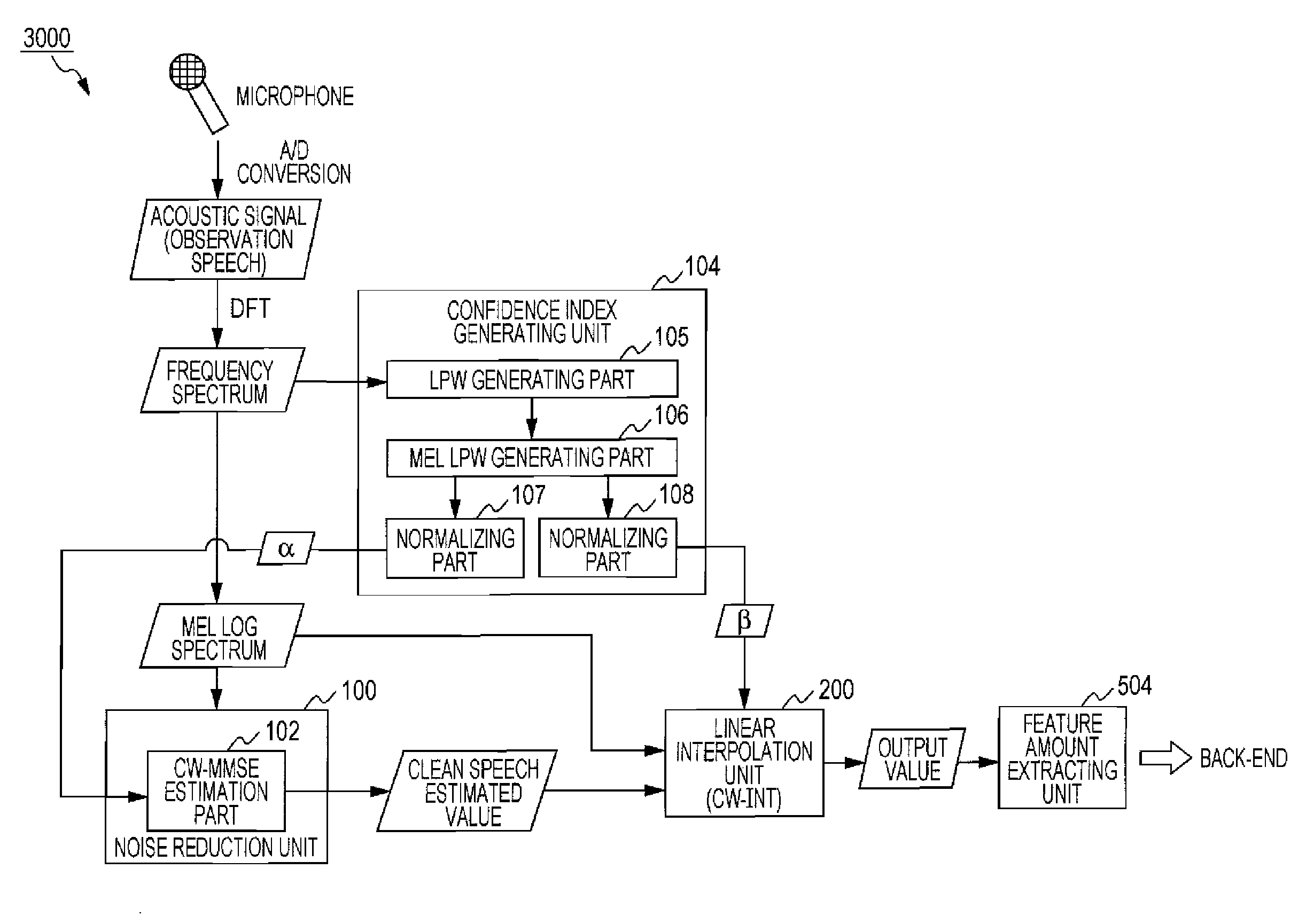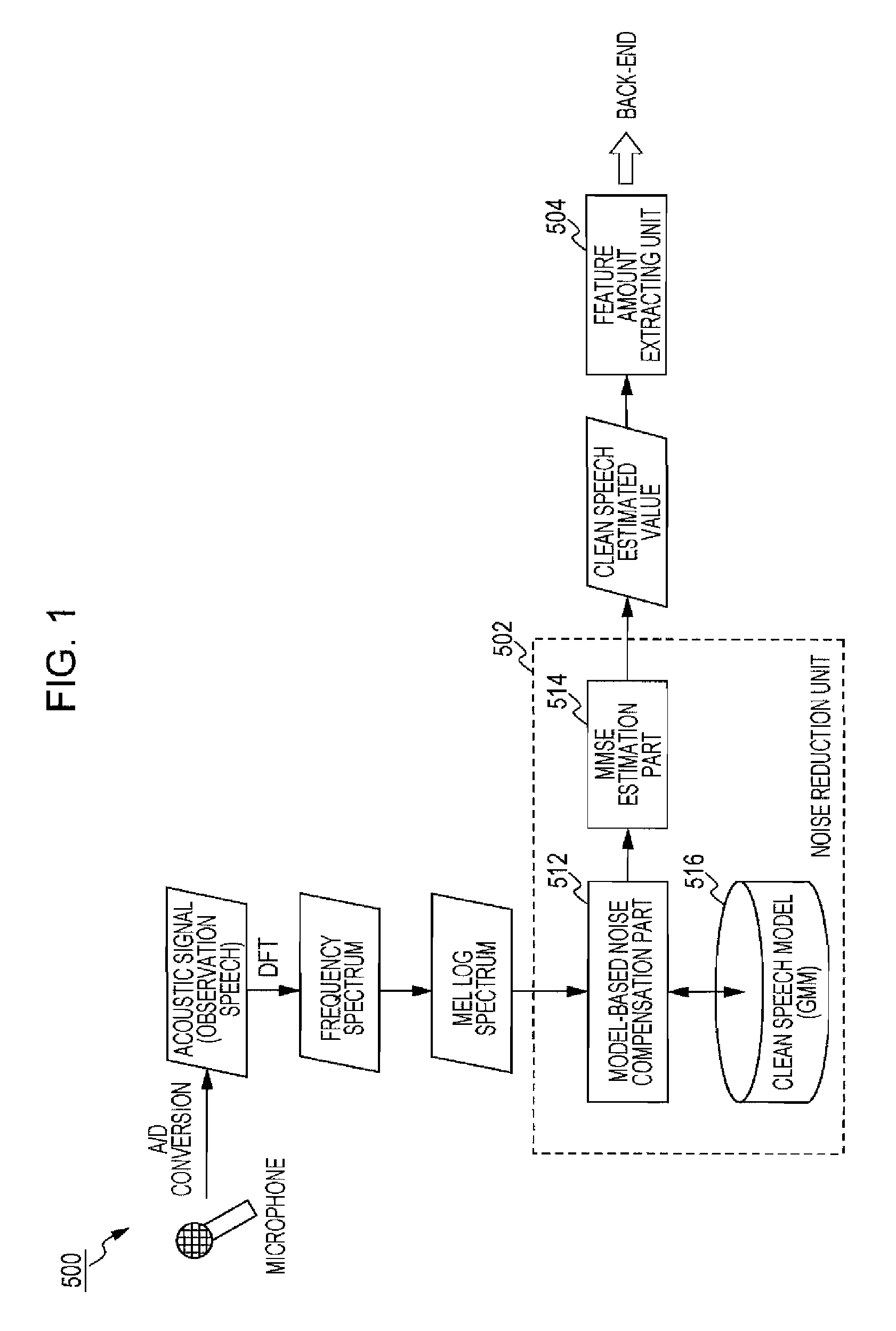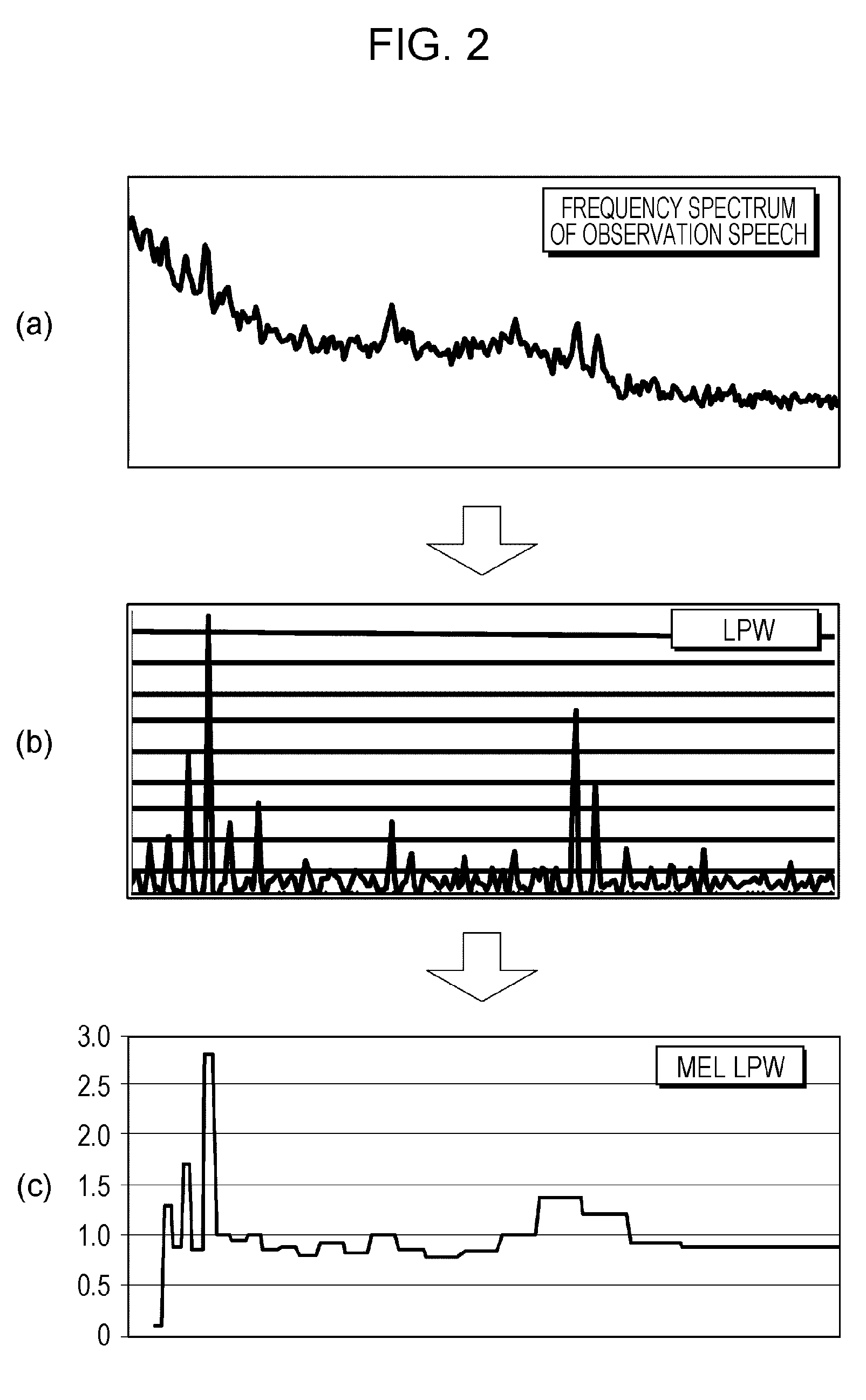Local peak weighted-minimum mean square error (lpw-mmse) estimation for robust speech
a robust speech and estimation technology, applied in the field of speech recognition technology, can solve problems such as failure to achieve desired effects
- Summary
- Abstract
- Description
- Claims
- Application Information
AI Technical Summary
Benefits of technology
Problems solved by technology
Method used
Image
Examples
first embodiment
[0045]As has been described above, MMSE estimation is, in short, a process of approximating the clean speech estimated value x̂ as the sum of mean vectors μx,k of k probability distributions weighted using the posterior probability ρk(y) as a weight. the present invention pays attention to this point and optimizes the output of the front-end by appropriately modifying the posterior probability in MMSE estimation.
[0046]CW-MMSE
[0047]In this section, a technique of weighting the posterior probability in MMSE estimation by using a confidence index as a weight will be described. In the following description, this technique is referred to as CW-MMSE (Confidence Weighted MMSE).
[0048]In existing MMSE, the clean speech estimated value x̂ is given by equation (9-1) or (9-2) below, and the posterior probability ρk(y) in each equation is given by equation (10) below, as has been described above.
x^=y-∫g·p(g|y)g≅y-∑kKρk(y)·μg,k(9-1)x^=∫x·p(x|y)x≅∑kKρk(y)·μx,k(9-2)ρk(y)=γk·N(y;μy,k,Σy,k) / ∑k′γk′·N(...
second embodiment
[0073]If observation speech is equivalent to clean speech, the best thing to do is to output the observation speech without processing it. However, with a model-based approach, even in such a case, a model of clean speech is estimated, and consequently, the output becomes more deteriorated than the clean speech. The second embodiment discloses a technique of solving this problem.
[0074]In this section, a technique of implementing linear interpolation between a speech model and observation speech, with a confidence index as a weight, will be described. In the following description, this technique is referred to as CW-INT (Confidence Weighted Interpolation).
[0075]In CW-INT, an output value x{tilde over ( )}d in a band d is given by a linear interpolation function indicated in equation (17) below:
[Eq. 17]
{tilde over (x)}d=(1.0−βd)·{circumflex over (x)}d+βd·yd (17)
[0076]In equation (17) above, x̂d indicates a clean speech estimated value in the band d, βd indicates a confidence index gi...
third embodiment
[0092]FIG. 9 conceptually illustrates the configuration of a front-end 3000 in a speech recognition system according to the The front-end 3000 includes the noise reduction unit 100 including the CW-MMSE estimation part 102, the linear interpolation unit 200 (CW-INT), the LPW generating part 105, the confidence index generating unit 104, and the mel LPW generating part 106. Hereinafter, a process executed by the front-end 3000 will be described on the basis of a flowchart illustrated in FIG. 10. Note that, in the following description, reference will be appropriately made to FIG. 9.
[0093]Firstly, when the frequency spectrum Y corresponding to one frame of observation speech is obtained (step S301), the LPW generating part 105 extracts the harmonic structure of the frequency spectrum Y and generates an LPW (step S302). Next, the mel LPW generating part 106 generates a mel LPW from the LPW (step S303). The normalizing part 107 normalizes the mel LPW with an appropriate method, and gen...
PUM
 Login to View More
Login to View More Abstract
Description
Claims
Application Information
 Login to View More
Login to View More - R&D
- Intellectual Property
- Life Sciences
- Materials
- Tech Scout
- Unparalleled Data Quality
- Higher Quality Content
- 60% Fewer Hallucinations
Browse by: Latest US Patents, China's latest patents, Technical Efficacy Thesaurus, Application Domain, Technology Topic, Popular Technical Reports.
© 2025 PatSnap. All rights reserved.Legal|Privacy policy|Modern Slavery Act Transparency Statement|Sitemap|About US| Contact US: help@patsnap.com



